City-Level E-Bike Sharing System Impact on Final Energy Consumption and GHG Emissions
Abstract
:1. Introduction
2. Materials and Methods
2.1. Dataset
2.2. Final Energy Consumption
2.3. GHG Emissions
2.4. Scenarios
3. Results
4. Discussion
5. Conclusions
Supplementary Materials
Author Contributions
Funding
Data Availability Statement
Acknowledgments
Conflicts of Interest
References
- Meddin, R.; DeMaio, P.; O’Brien, O.; Rabello, R.; Yu, C.; Seamon, J.; Thiago, B. The Meddin Bike-sharing World Map. Available online: http://bikesharingworldmap.com/ (accessed on 29 August 2022).
- Galatoulas, N.-F.; Genikomsakis, K.N.; Ioakimidis, C.S. Spatio-Temporal Trends of E-Bike Sharing System Deployment: A Review in Europe, North America and Asia. Sustainability 2020, 12, 4611. [Google Scholar] [CrossRef]
- Silva, C.; Marques, C.; Raposo, M.; Soares, A. Smart and Sustainable Mobility Adaptation Toward the Energy Transition. In Technologies for Integrated Energy Systems and Networks; Wiley: Hoboken, NJ, USA, 2022; pp. 165–186. [Google Scholar]
- Macioszek, E.; Świerk, P.; Kurek, A. The bike-sharing system as an element of enhancing sustainable mobility—A case study based on a city in Poland. Sustainability 2020, 12, 3285. [Google Scholar] [CrossRef]
- Caulfield, B.; O’Mahony, M.; Brazil, W.; Weldon, P. Examining usage patterns of a bike-sharing scheme in a medium sized city. Transp. Res. Part A Policy Pract. 2017, 100, 152–161. [Google Scholar] [CrossRef]
- Xu, X.; Ye, Z.; Li, J.; Xu, M. Understanding the Usage Patterns of Bicycle-Sharing Systems to Predict Users’ Demand: A Case Study in Wenzhou, China. Comput. Intell. Neurosci. 2018, 2018, 9892134. [Google Scholar] [CrossRef] [PubMed]
- Nikitas, A. Understanding bike-sharing acceptability and expected usage patterns in the context of a small city novel to the concept: A story of ‘Greek Drama’. Transp. Res. Part F Traffic Psychol. Behav. 2018, 56, 306–321. [Google Scholar] [CrossRef]
- Bakogiannis, E.; Siti, M.; Tsigdinos, S.; Vassi, A.; Nikitas, A. Monitoring the first dockless bike sharing system in Greece: Understanding user perceptions, usage patterns and adoption barriers. Res. Transp. Bus. Manag. 2019, 33, 100432. [Google Scholar] [CrossRef]
- Chen, Z.; van Lierop, D.; Ettema, D. Dockless bike-sharing systems: What are the implications? Transp. Rev. 2020, 40, 333–353. [Google Scholar] [CrossRef]
- Nikitas, A. How to Save Bike-Sharing: An Evidence-Based Survival Toolkit for Policy-Makers and Mobility Providers. Sustainability 2019, 11, 3206. [Google Scholar] [CrossRef]
- Ji, S.; Cherry, C.R.; Han, L.D.; Jordan, D.A. Electric bike sharing: Simulation of user demand and system availability. J. Clean. Prod. 2014, 85, 250–257. [Google Scholar] [CrossRef]
- Li, A.; Gao, K.; Zhao, P.; Qu, X.; Axhausen, K.W. High-resolution assessment of environmental benefits of dockless bike-sharing systems based on transaction data. J. Clean. Prod. 2021, 296, 126423. [Google Scholar] [CrossRef]
- Luo, H.; Zhao, F.; Chen, W.-Q.; Cai, H. Optimizing bike sharing systems from the life cycle greenhouse gas emissions perspective. Transp. Res. Part C Emerg. Technol. 2020, 117, 102705. [Google Scholar] [CrossRef]
- Autoridade Nacional de Segurança Rodoviária. Available online: http://www.ansr.pt/Pages/default.aspx (accessed on 29 August 2022).
- INE. Inquérito à Mobilidade nas Áreas Metropolitanas do Porto e de Lisboa 2017. 2018. Available online: https://www.ine.pt/xportal/xmain?xpid=INE&xpgid=ine_publicacoes&PUBLICACOESpub_boui=349495406&PUBLICACOESmodo=2&xlang=pt (accessed on 29 August 2022).
- INE. Available online: https://www.ine.pt/xportal/xmain?xpid=INE&xpgid=ine_indicadores&contecto=pi&indOcorrCod=0007244&selTab=tab0&xlang=pt (accessed on 29 August 2022).
- ASF—Autoridade de Supervisão de Seguros e Fundos de Pensões. Available online: https://www.asf.com.pt/ISP/AgregadorEstatisticas (accessed on 29 August 2022).
- Drobnik, J.; Jain, P. Electric and hybrid vehicle power electronics efficiency, testing and reliability. World Electr. Veh. J. 2013, 6, 719–730. [Google Scholar] [CrossRef]
- Leuenberger, M.; Frischknecht, R. Life Cycle Assessment of Two Wheel Vehicles; Uster: Uster, Switzerland, 2010. [Google Scholar]
- Evtimov, I.; Ivanov, R.; Staneva, G.; Kadikyanov, G. A Study on electric bicycle energy efficiency. Transp. Probl. 2015, 10, 131–140. [Google Scholar] [CrossRef]
- Mccarran, T.; Carpenter, N. Electric Bikes: Survey and Energy Efficiency Analysis; Report: 000-053; Efficiency Vermont: Winooski, Vermont, 2018. [Google Scholar]
- Toman, M.; Cipin, R.; Cervinka, D.; Vorel, P.; Prochazka, P. Li-Ion Battery Charging Efficiency. ECS Trans. 2016, 74, 37–43. [Google Scholar] [CrossRef]
- Prussi, M.; Yugo, M.; De Prada, L.; Padella, M.; Edwards, R. JEC Well-to-Wheels Report v5; Publications Office of the European Union: Luxembourg, 2020. [Google Scholar]
- IPCC. Climate Change 2021: The Physical Science Basis. In Contribution of Working Group I to the Sixth Assessment Report of the Intergovernmental Panel on Climate Change; Masson-Delmotte, V., Zhai, P., Pirani, A., Connors, S.L., Péan, C., Berger, S., Cau, N., Eds.; IPCC: Paris, France, 2021. [Google Scholar]
- Silva, C. Greenhouse Gas Emission Assessment of Simulated Wastewater Biorefinery. Resources 2021, 10, 78. [Google Scholar] [CrossRef]
- Penman, J.; Gytarsky, M.; Hiraishi, T.; Irving, W.; Krug, T. 2006 IPCC—Guidelines for National Greenhouse Gas Inventories; IPCC: Paris, France, 2006. [Google Scholar]
- Agência Portuguesa do Ambiente. Fator de Emissão da Eletricidade—2022; APA: Amadora, Portugal, 2022. [Google Scholar]
- Eurostat. Available online: https://www.eea.europa.eu/data-and-maps/daviz/co2-emission-intensity-10/ (accessed on 29 August 2022).
- Pacheco, R.; Silva, C. Global Warming Potential of Biomass-to-Ethanol: Review and Sensitivity Analysis through a Case Study. Energies 2019, 12, 2535. [Google Scholar] [CrossRef]
- Silva, C.; Moniz, P.; Oliveira, A.C.; Vercelli, S.; Reis, A.; da Silva, T.L. Cascading Crypthecodinium cohnii Biorefinery: Global Warming Potential and Techno-Economic Assessment. Energies 2022, 15, 3784. [Google Scholar] [CrossRef]
- Silva, C. At what extent the benefits of introducing alternative light-duty vehicles offset those of increasing the buses average occupancy? Energy Convers. Manag. 2013, 70, 211–219. [Google Scholar] [CrossRef]
- Albrektsen, R.H.N.; Hjorth, M.; Mikkelsen, D.; German, R.; Goodwin, J.; Hobson, M.; King, K.; Sanchez, B.; Amon, B.V.N.; Kouridis, C.; et al. EMEP/EEA Emission Inventory Guidebook; Publications Office of the European Union: Luxembourg, 2019; Volume 11. [Google Scholar]
- Available online: https://dados.gov.pt/pt/datasets/gira-bicicletas-de-lisboa-historico/ (accessed on 29 August 2022).

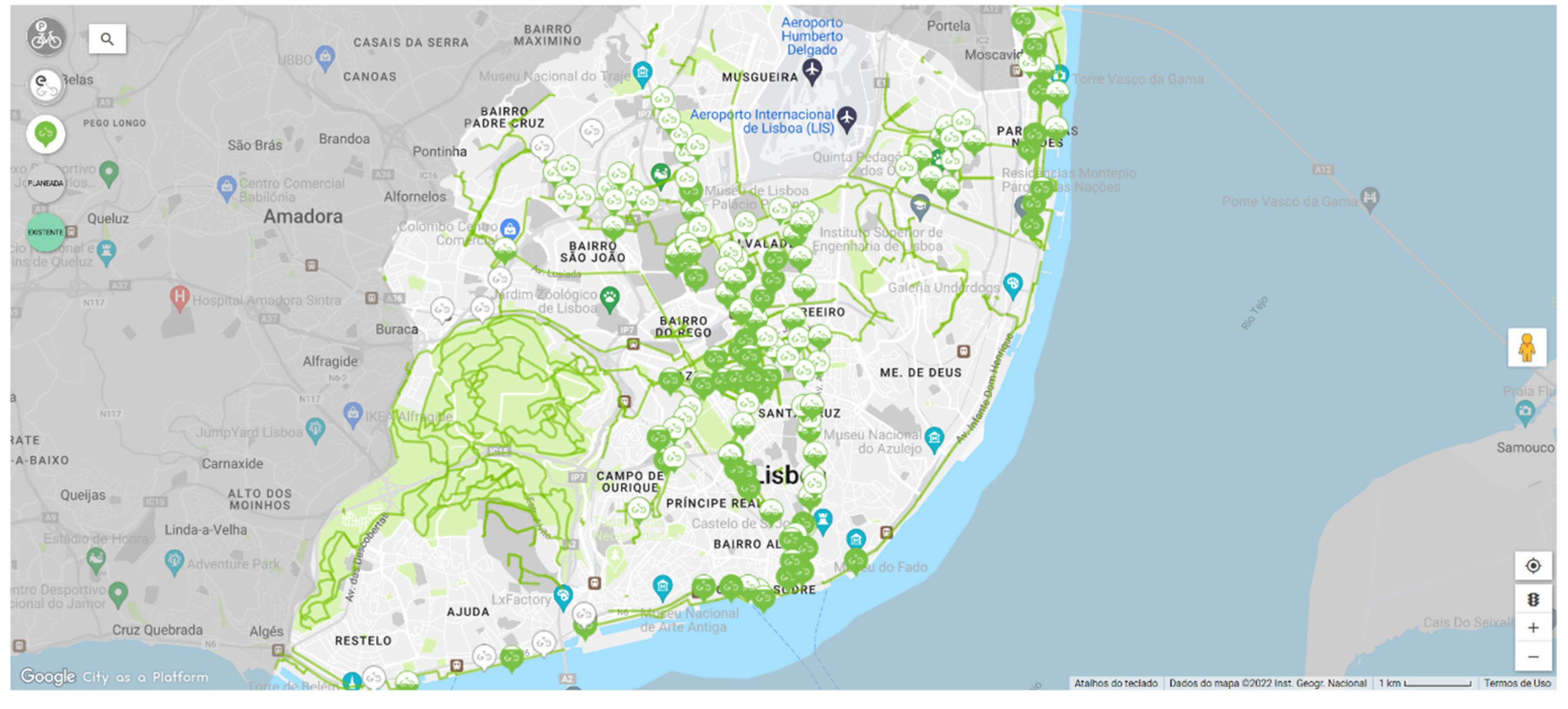

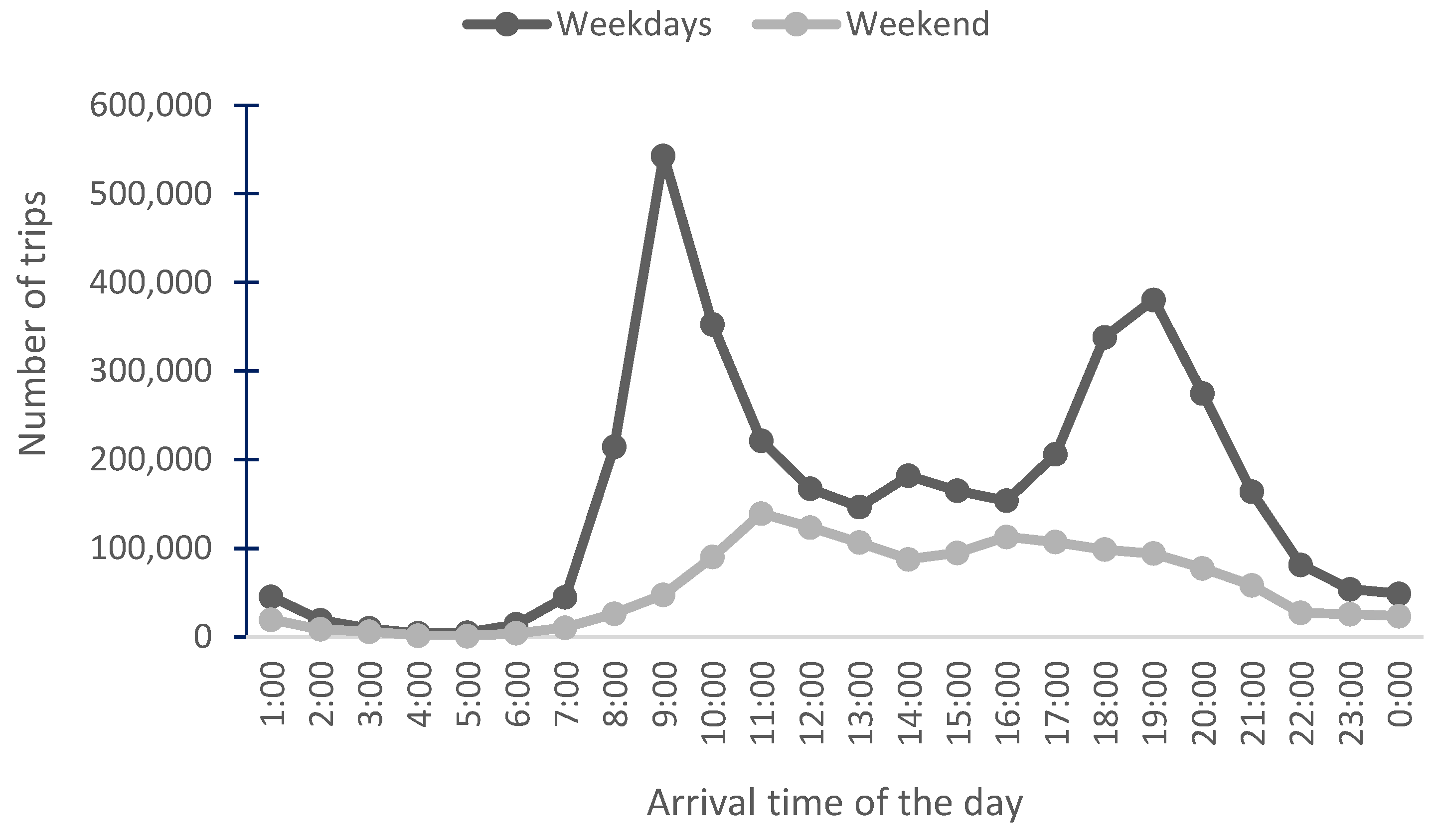
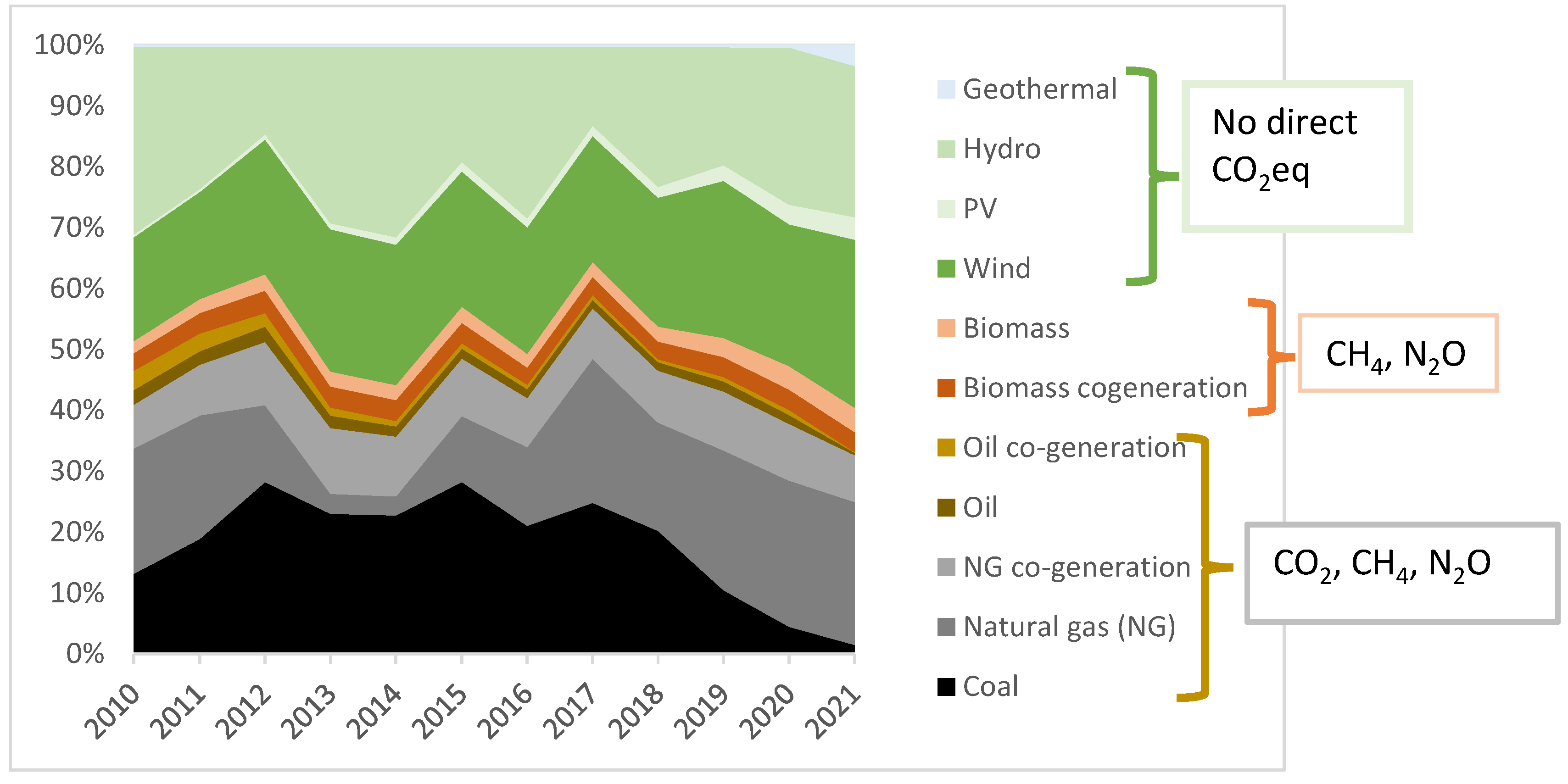
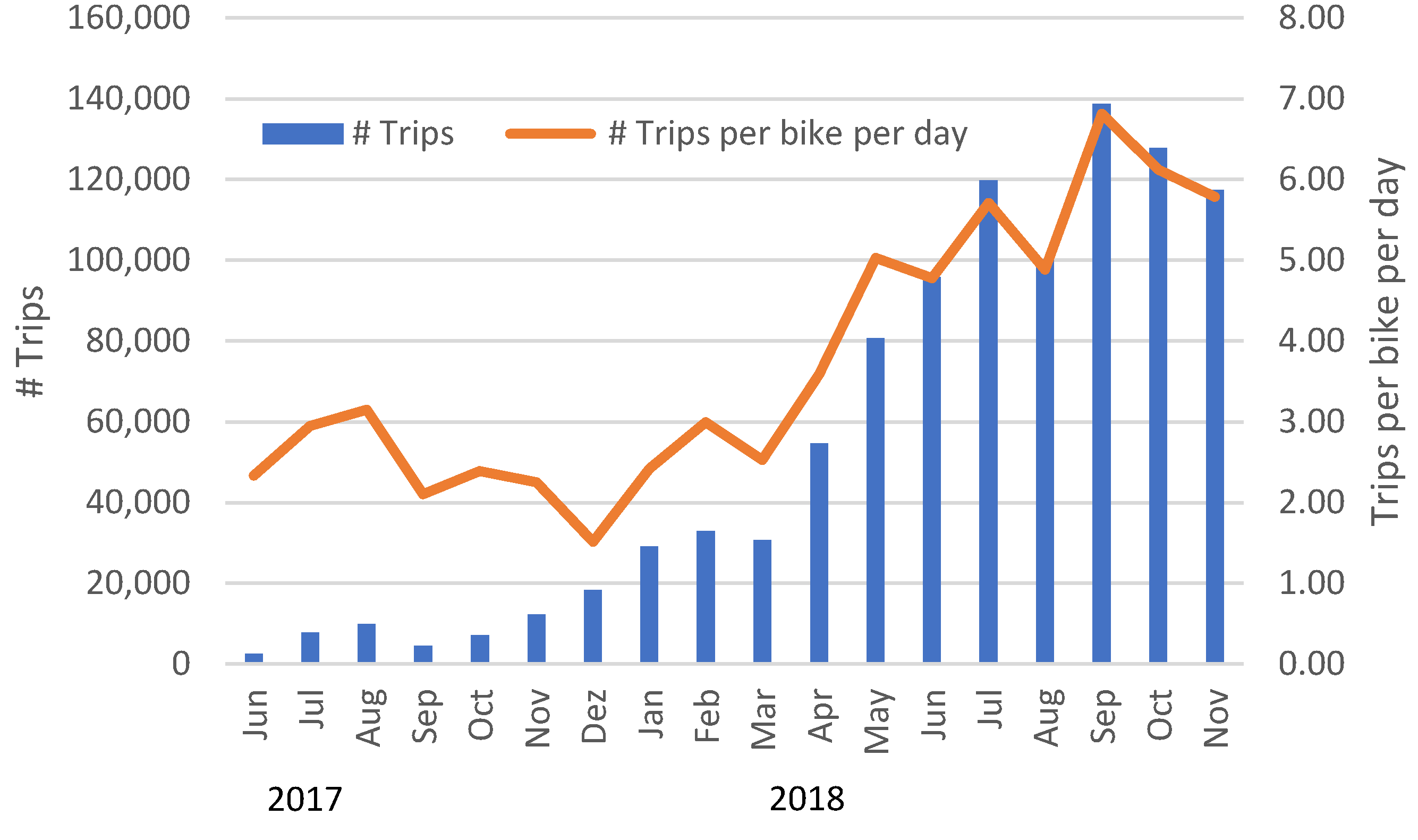


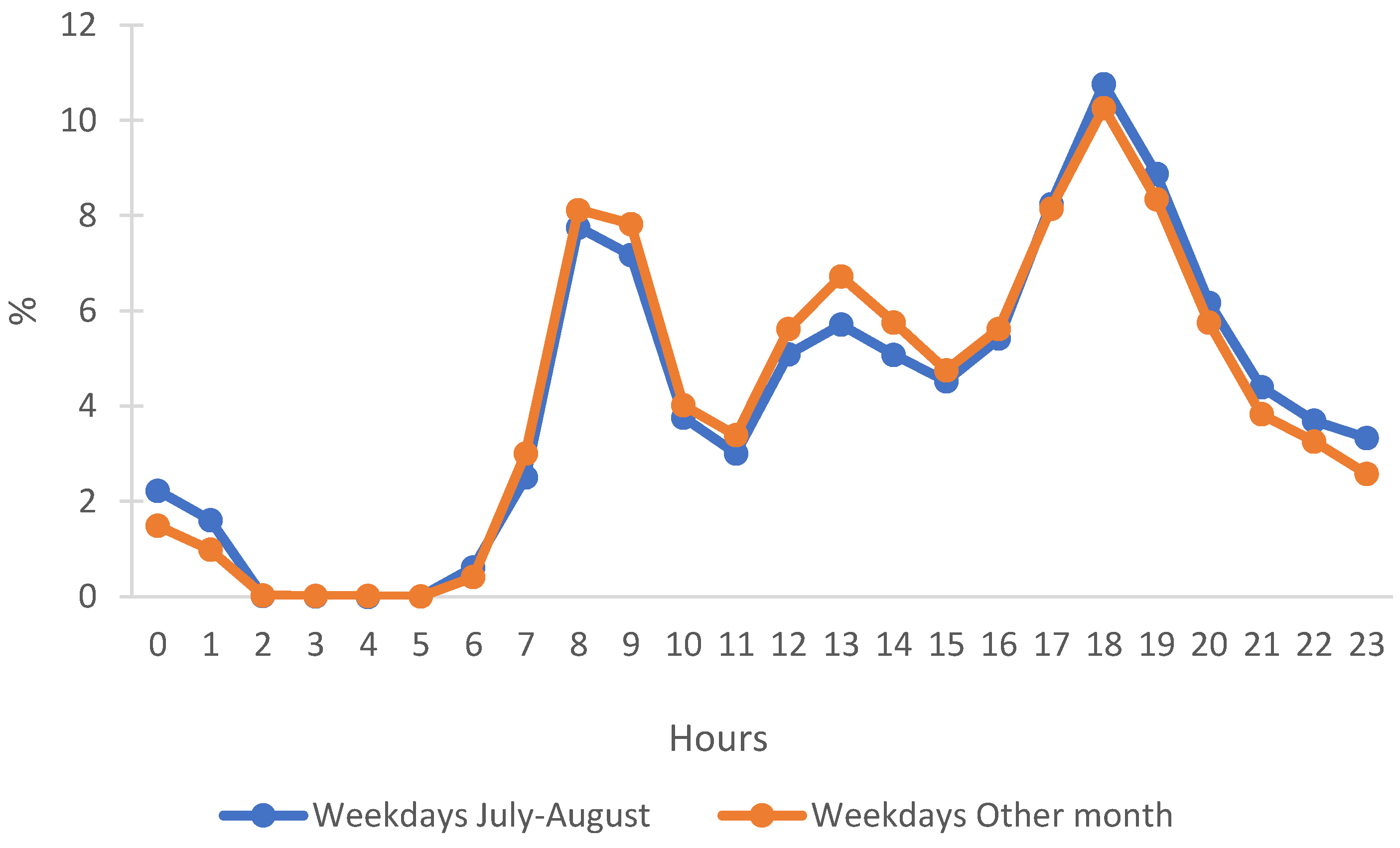
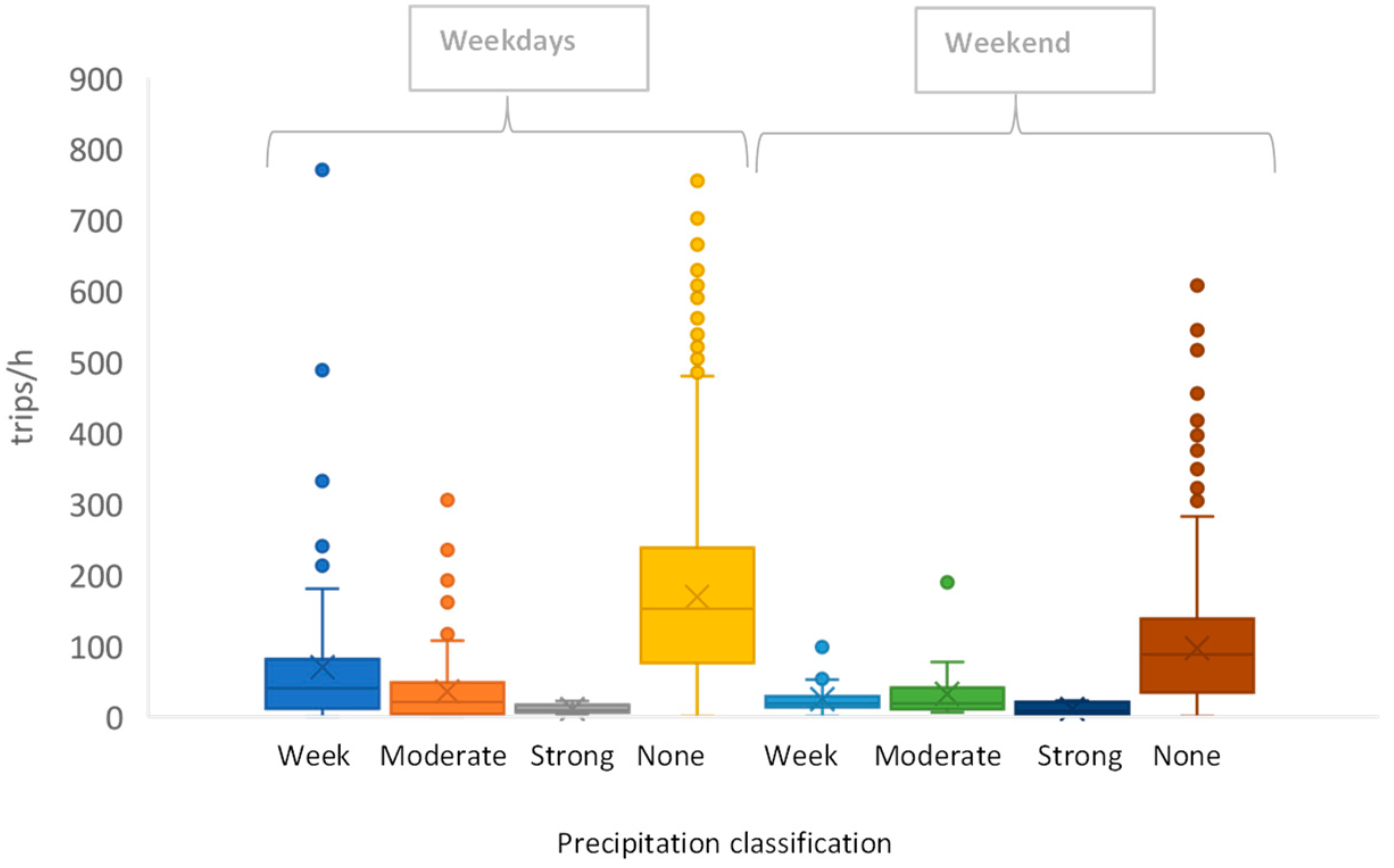
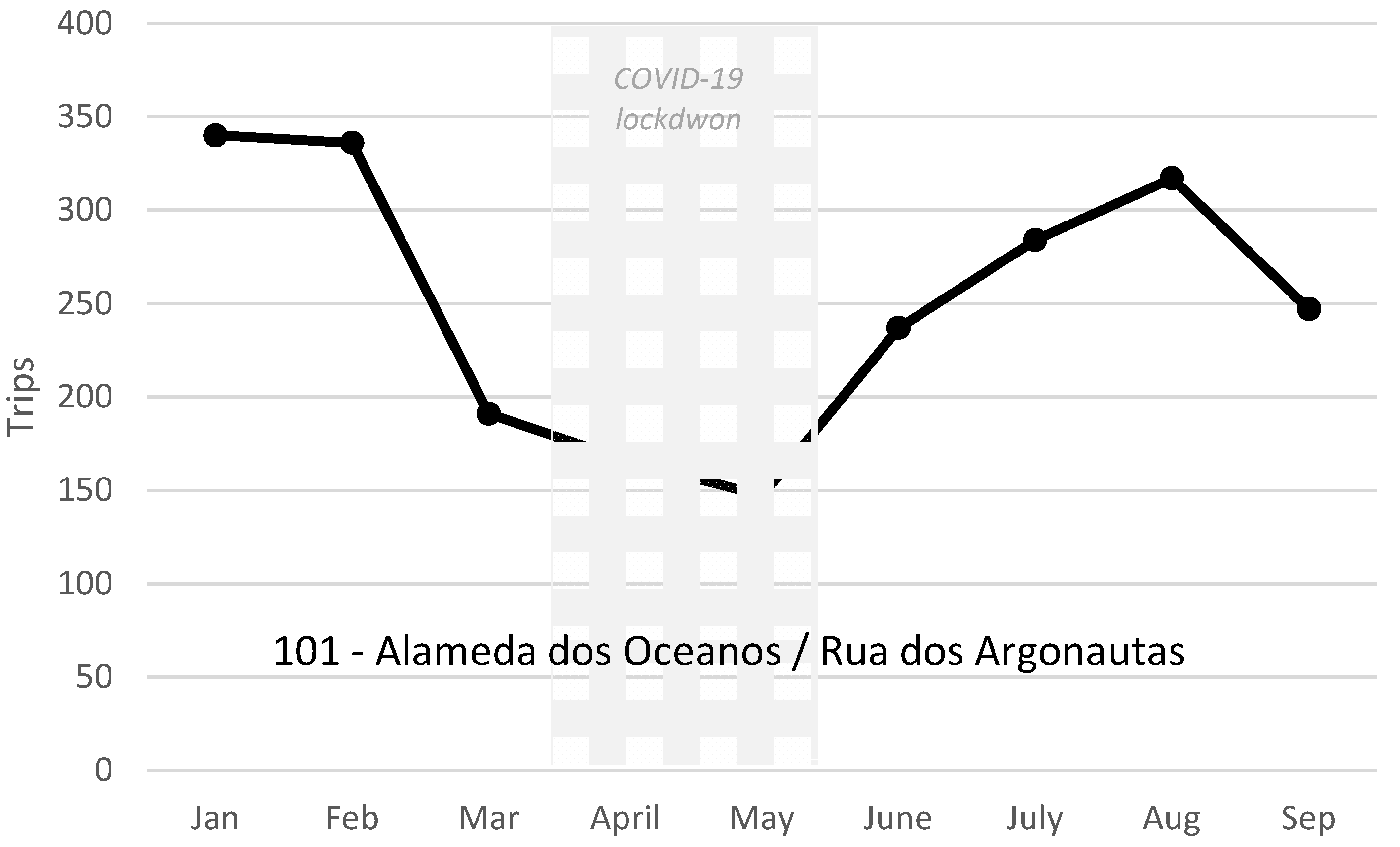
| Year | Total | ICEV-Diesel | ICEV-Gasoline | ICEV-LPG | BEV-Electricity | PHEV * | HEV * | |
|---|---|---|---|---|---|---|---|---|
| 2017 | Passenger | 5,565,963/100% | 3,146,222/57% | 2,241,224/40% | 58,71 | 26,949 | 30,990 | 61,324 |
| Goods delivery | 1,290,390/100% | 1,277,133/99% | 11,300/0.9% | 600 | 1231 | 30,990 | 61,308 | |
| 2018 | Passenger | 5,452,119/100% | 3,044,926/56% | 2,264,850/42% | 57,432 | 18,139 | 17,526 | 48,787 |
| Goods delivery | 1,396,653/100% | 1,378,708/98% | 16,070/1% | 768 | 997 | 6 | ||
| 2019 | Passenger | 5,282,970/100% | 2,952,260/56% | 2,217,506/ | 56,213 | 9980 | 9699 | 36,960 |
| Goods delivery | 1,267,647/100% | 1,254,562 | 11,799 | 620 | 598 | 1 |
| GWP 1 100 Years | Default | Min | Max |
|---|---|---|---|
| CH4 fossil | 29.8 | 18.8 | 39.8 |
| CH4 non-fossil | 27.2 | 16.2 | 38.2 |
| N2O | 273 | 155 | 391 |
| g/kWh | Default | Min | Max |
|---|---|---|---|
| Coal | 942 | 906 | 996 |
| NG combined cycle | 379 | 366 | 398 |
| NG co-generation | 201 | 194 | 211 |
| Crude oil | 659 | 627 | 673 |
| Crude oil co-generation | 270 | 257 | 276 |
| Biomass | 26 | 5 | 127 |
| Biomass co-generation | 7 | 2 | 35 |
| Biogas organic waste | 0.74 | 0.13 | 3.05 |
| Biogas organic waste co-generation | 0.21 | 0.04 | 0.85 |
| Municipal waste non-biogenic | 1209 | 951 | 1688 |
| Municipal waste non-biogenic co-generation | 37 | 337 | 265 |
| CO2 | CH4 | N2O | Default CO2eq 1 | Min 1 | Max 1 | |
|---|---|---|---|---|---|---|
| Refinery gasoline (g/MJ) | 5.5 | 0 | 0 | 5.5 | 5.5 | 5.5 |
| Refinery diesel(g/MJ) | 7.2 | 0 | 0 | 7.2 | 7.2 | 7.2 |
| ICEV-diesel driving (g/km) | 107 | 0.0092 | 0.0045 | 107.3 | 107.2 | 107.4 |
| ICEV-gasoline driving (g/km) | 127 | 0.0052 | 0.0018 | 127.6 | 127.4 | 127.9 |
| Precipitation | Wind Speed | Temperature | Relative Humidity | |
|---|---|---|---|---|
| R | −0.75 | −0.65 | 0.92 | −0.54 |
| p-Value | 0.0059 | 0.0395 | 0.0078 | 0.1684 |
| Positive Impacts | Negative Impacts | |
|---|---|---|
| Final energy consumption (GJ/year) | −451 | +8 |
| GHG emissions (ton/year) | −36 | +0.7 |
Publisher’s Note: MDPI stays neutral with regard to jurisdictional claims in published maps and institutional affiliations. |
© 2022 by the authors. Licensee MDPI, Basel, Switzerland. This article is an open access article distributed under the terms and conditions of the Creative Commons Attribution (CC BY) license (https://creativecommons.org/licenses/by/4.0/).
Share and Cite
Raposo, M.; Silva, C. City-Level E-Bike Sharing System Impact on Final Energy Consumption and GHG Emissions. Energies 2022, 15, 6725. https://doi.org/10.3390/en15186725
Raposo M, Silva C. City-Level E-Bike Sharing System Impact on Final Energy Consumption and GHG Emissions. Energies. 2022; 15(18):6725. https://doi.org/10.3390/en15186725
Chicago/Turabian StyleRaposo, Mariana, and Carla Silva. 2022. "City-Level E-Bike Sharing System Impact on Final Energy Consumption and GHG Emissions" Energies 15, no. 18: 6725. https://doi.org/10.3390/en15186725
APA StyleRaposo, M., & Silva, C. (2022). City-Level E-Bike Sharing System Impact on Final Energy Consumption and GHG Emissions. Energies, 15(18), 6725. https://doi.org/10.3390/en15186725








